Last Chance to Catch NYC's Holiday Notalgia Train
We met the voices of the NYC subway on our nostalgia ride this weekend!

Learn more about North Brother Island, a mysterious, abandoned island in NYC's East River!

North Brother Island is most famous today for the beautiful photographs of its crumbling state, but its history and secrets are what give the place its mythical status in New York City. In 2015, there was a study that explored opening North Brother Island to public access, but access to the island is still forbidden. Here, we explore our favorite secrets of this off-limits island in the East River, many of which were sourced from the great book North Brother Island, The Last Unknown Place in New York City by Christopher Payne and Randall Mason.
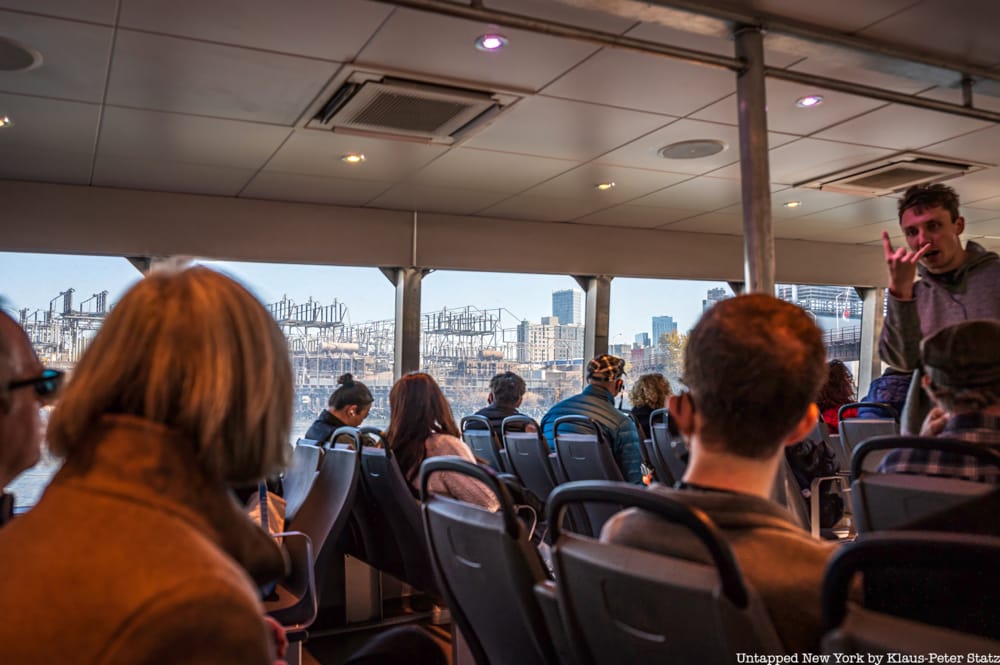
Sail past North Brother Island and more overlooked waterfront sites responsible for keeping the city that never sleeps running when you join an upcoming tour led by an energy professional!
This post contains affiliate links, which means Untapped New York earns a commission. There is no extra cost to you and the commissions earned help support our mission of independent journalism!
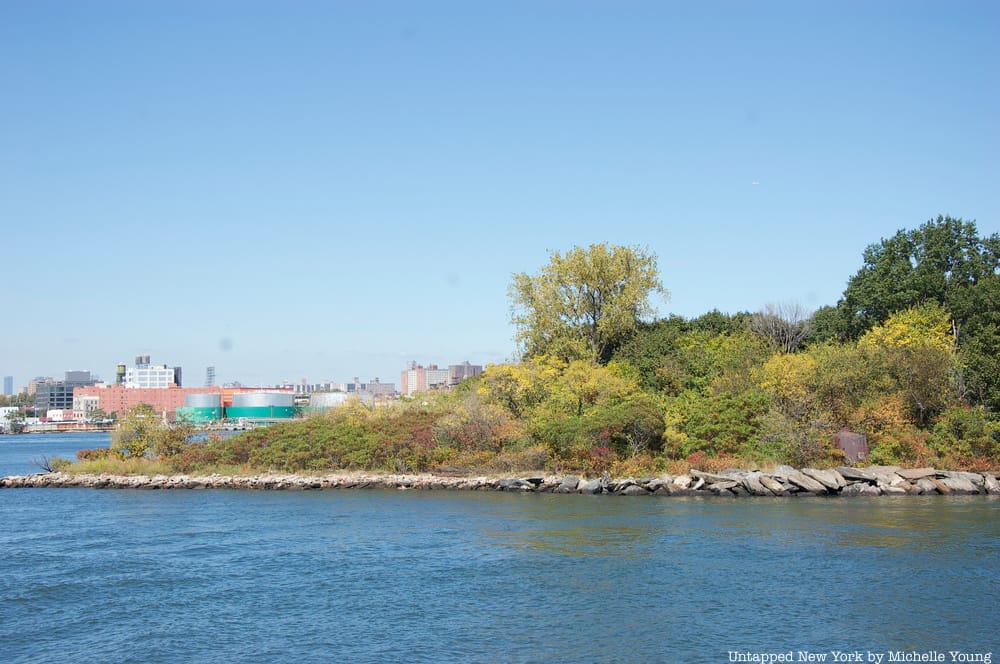
In 1791, the Two Brothers Islands were put up for sale at an auction at the Merchants Coffee House, where all business and politics seemed to take place in the early days of the colony. In the print advertisement, it was offered as an “eligible situation for a pilot or a house of entertainment,” due to its location along the river, and noted that already extant on the North Brother Island was a “dwelling house, barn, orchard, and a variety of fruit trees, with a quantity of standing firewood and timber.”
Initially, North Brother Island was part of the Bronx, which was part of Westchester. In 1881, a bill transferred North Brother Island to New York City, which was just Manhattan at the time (as the consolidation of the boroughs did not take place until 1898). Thus, other early short-term structures built on North Brother Island were temporary hospitals by Westchester County in the mid-19th century.
Before the Parks Department took ownership of the island in 2007, it was privately owned. One of the earliest former owners was Jacob Ruppert, also an early owner of the Yankees basebal team. Ruppert had a summer home on the island but it sadly burnt down in 1909. No one has lived there since.
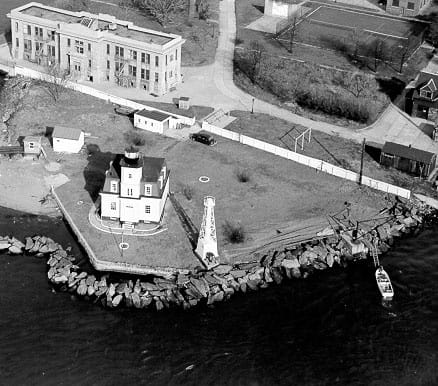
In 1868, after failed attempts to establish a lighthouse in 1829 and 1848 (the landowners refused to sell), a piece of land on the southern tip was acquired in 1868 by the federal government. The lighthouse built here was the first long-term structure built on the island. According to Randall Mason in North Brother Island, The Last Unknown Place in New York City, the small lighthouse had a mansard roof and octagonal tower. Today, Mason rates, “traces of the lighthouse and federally owned property remain.”
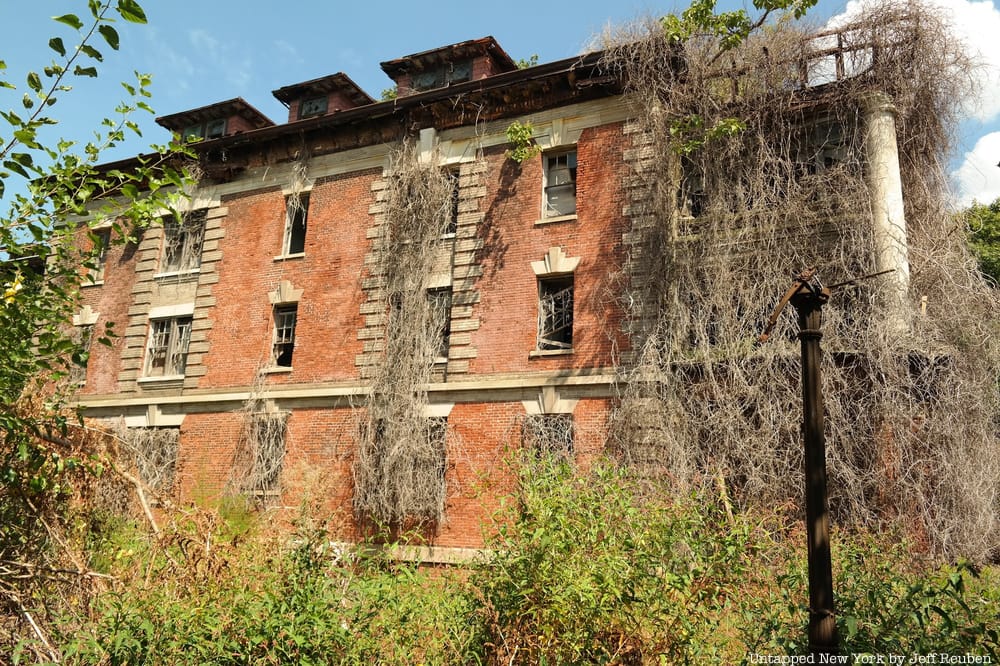
By 1881, plans were underway to create an infectious disease hospital on North Brother Island. This new hospital would take on the operations of Riverside Hospital, an existing hospital on Blackwell’s Island (now Roosevelt Island). It treated ailments such as typhoid fever, tuberculosis, and smallpox.
While there was controversy over the practices of the institution, both medically and socially, Mason writes, “North Brother Island worked. It protected the city from pestilence. The threat and fear of infectious diseases were great, and Riverside Hospital was essential to treating it in terms of the new science and policies of public health.”
Cities like Philadelphia looked at New York City’s solution as an example. Photographer and reformer Jacob Riis was also a supporter of the undertakings at Riverside Hospital, finding it peaceful and effective, and felt, as Mason writes, “exile to North Brother Island was necessary to protect the city and well worth the cost, both social and financial.”
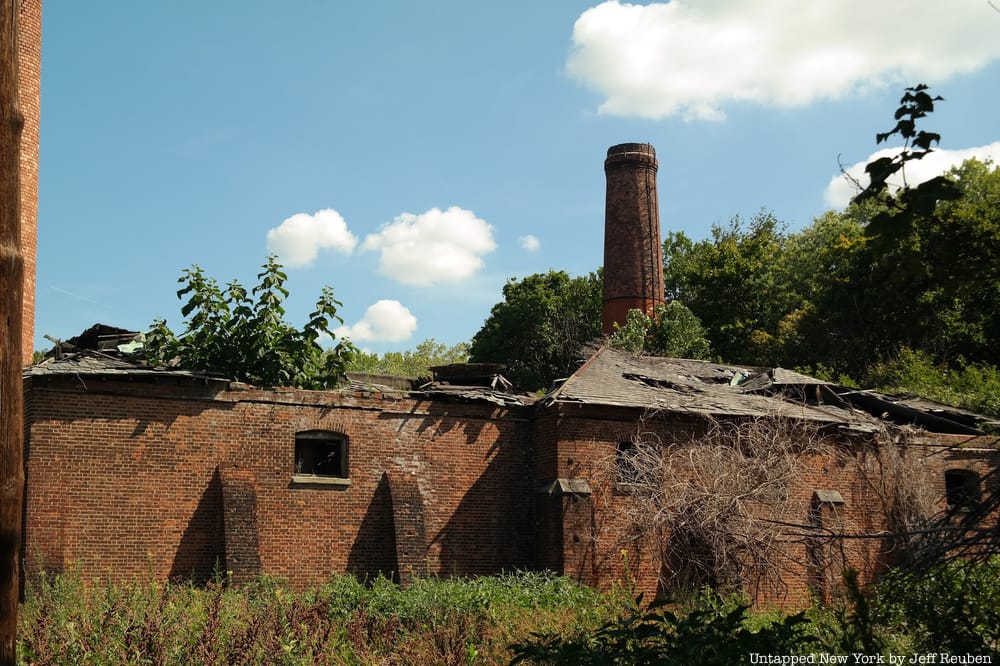
After the initial success in controlling epidemics in New York City, North Brother Island “soon became a place of moral compromise, lax care, and anti-immigrant discrimination,” Mason writes. The infamous Typhoid Mary (aka Mary Mellon) was a figure who epitomized the island's challenges and forthcoming decline. She was a healthy carrier of typhus and worked as a cook for the upper classes of New York.
She infected more than twenty people and was first sent to North Brother Island from 1907 to 1910. She was released on the condition that she would not work as a cook, but she continued to do so under an alias and infected more people. She was sent back for life from 1915 until her death in 1938. She lived in a small house built just for her so that she could be in complete isolation. In the book Fever, Mary Beth Keane writes, “I really believe that, if she had infected a tenement with hundreds of people in it, and far more deaths had been the result, she wouldn’t have been put in the position she was in, working as she did for a wealthy family.”
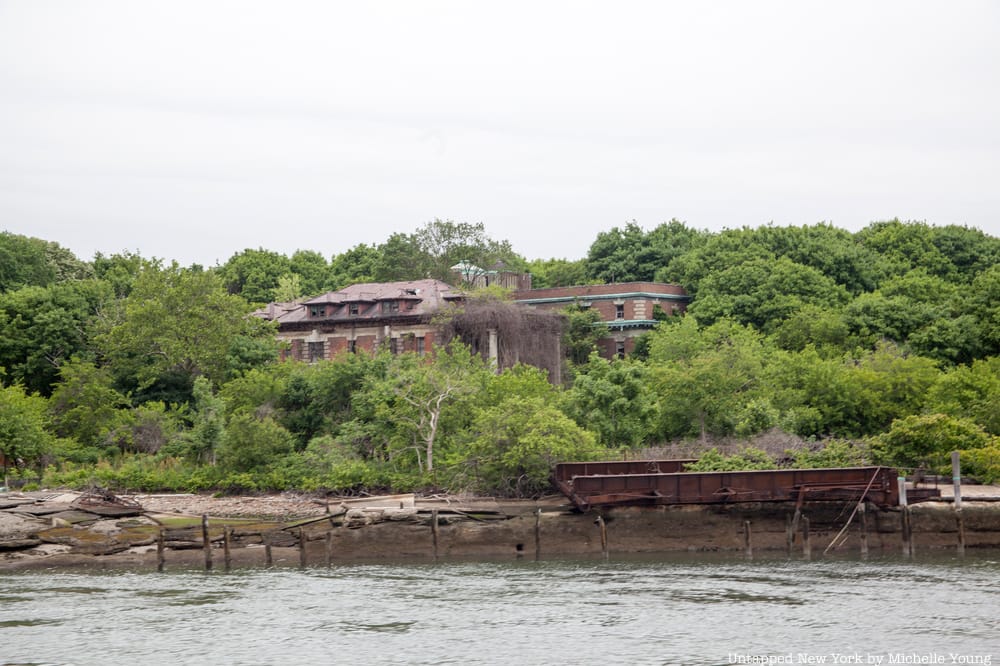
Four acres of land were added to the eastern side of North Brother Island in 1909, accounting for 25% of the total island. Dormitories and other buildings were constructed on top. of this fill. As Christopher Payne tells us, he finished shooting photography for the book shortly after Hurricane Sandy, when much of the landfill eroded away.
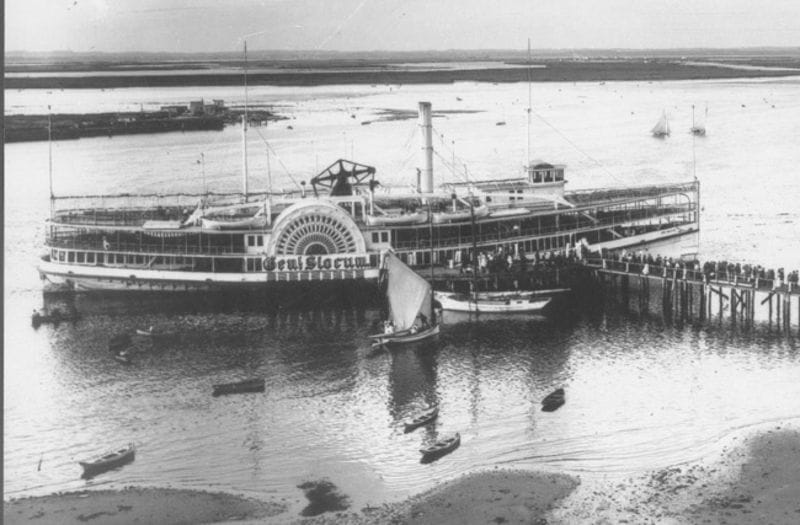
Until the events of September 11th, the sinking of the General Slocum was responsible for the largest loss of life in New York City. The tragedy forever changed the composition of the Lower East Side. On June 15, 1904, St. Mark’s Evangelical Church chartered a boat, the General Slocum, to take 1,358 members of its German-American congregation for a fun-filled day on the water and on a Long Island beach.
Not far from shore, a fire burst out onboard and quickly consumed the ship. The combination of faulty lifeboats and life jackets, a panicked crowd of non-swimmers, and a cowardly crew that sought their own escape first led to mayhem and death. The crisis was made worse by the captain’s refusal to bring the burning ship to shore, ostensibly to prevent the fire from spreading. The unfortunate timing of the fire occurred while the boat was in Hell Gate’s notoriously rough waters.
The General Slocum sank just off North Brother Island with victims and debris washing up on shore. The staff of the hospitals of the island served as rescue staff for the event. 1,021 people died either by fire or drowning that day, with only a few hundred surviving. The disaster also devastated the large German-American population on the Lower East Side.
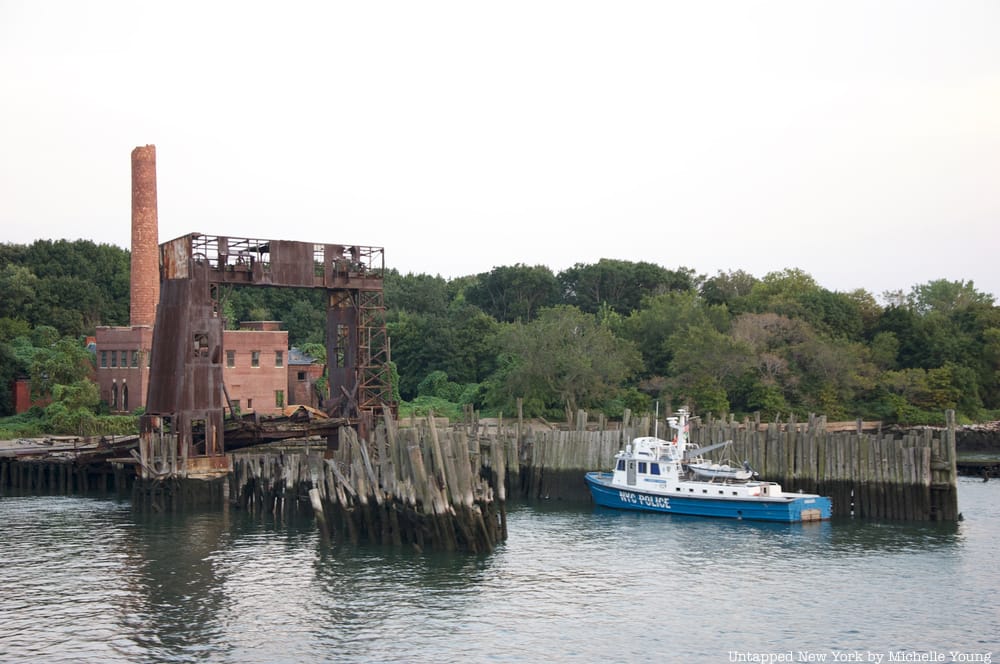
North Brother Island had declined in importance as a medical institution as scientific advancements and new ideas for care emerged in the years leading up to World War II. Faced with the housing crisis following the war, the government leased land and buildings on the island to house returning veterans. It should also be noted that after World War I, North Brother treated veterans with drug addictions. A ferry system was set up to bring veterans to the city’s universities to complete their education or for work.
A small village emerged, replete with amenities like a grocery store, library, and movie theater – not too dissimilar from Governors Island later which had a Burger King and a motel. About 500 people lived on North Brother Island and Mason writes that the “island population may have reached 1,500 at its peak in the late 1940s.”
Those who lived here during this time, some who came to speak to Christopher Payne and share their mementos after the release of his book, say it was an idyllic time. This was not to last, however.
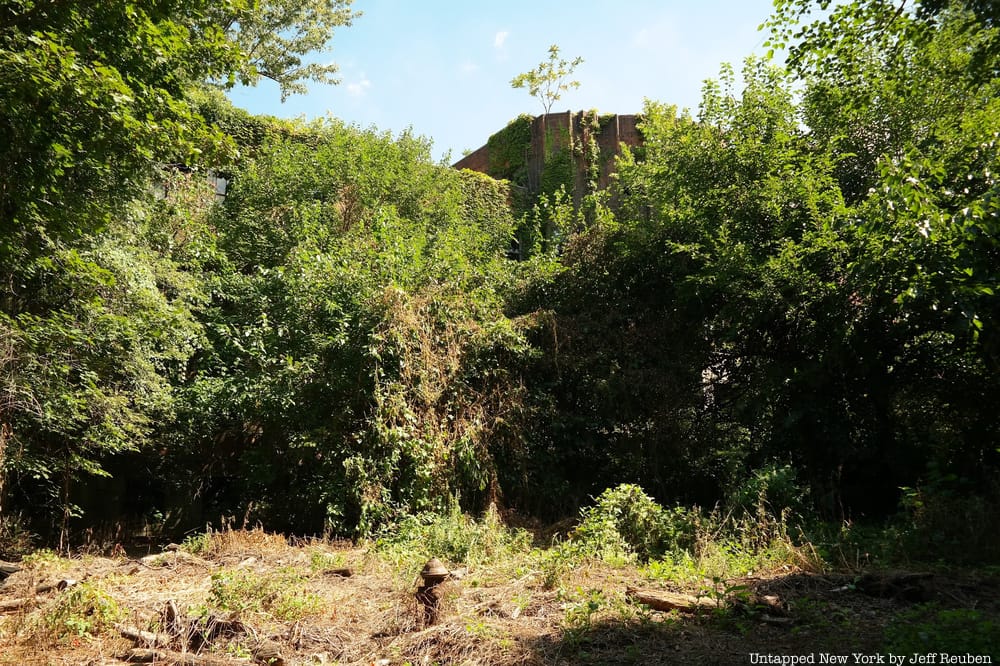
In the 1950s and 1960s, drug abuse came to the forefront as a major public health issue. In 1952, the Tuberculosis Pavilion and other buildings were repurposed as drug treatment facilities, with isolation returning as a preferred method of treatment. Graffiti that can still be seen on the walls of buildings today showcase the difficulty of patients on the island during this time.
It’s an urban explorer's dream to get to North Brother Island, which now serves as a bird sanctuary. Both North and South Brother islands make up the Harbor Herons Preserve, part of a "nationally recognized complex of uninhabited islands and expansive marshes essential for shorebirds, located right here in New York City."
The islands are managed by the New York City Parks and Recreation Department. If you aren’t part of the lucky few who have gained access for research or other reasons directly through the Parks Department, you're chances of (legally) getting onto the island are slim. We got lucky on a canoe trip back in 2015 and were brought ashore by for a surprise stop with an Urban park Ranger. Check out our photos here!
According to Robert Sullivan, two city councilmen in 1971 proposed to build “The Vegas of the East” on North Brother Island. Other suggestions have included prisons and every so often, architecture students dream up visionary plans for the island. A 2015 study, announced by New York City councilman Mark Levine and undertaken by PennPraxis, was the closest to restoring public access.
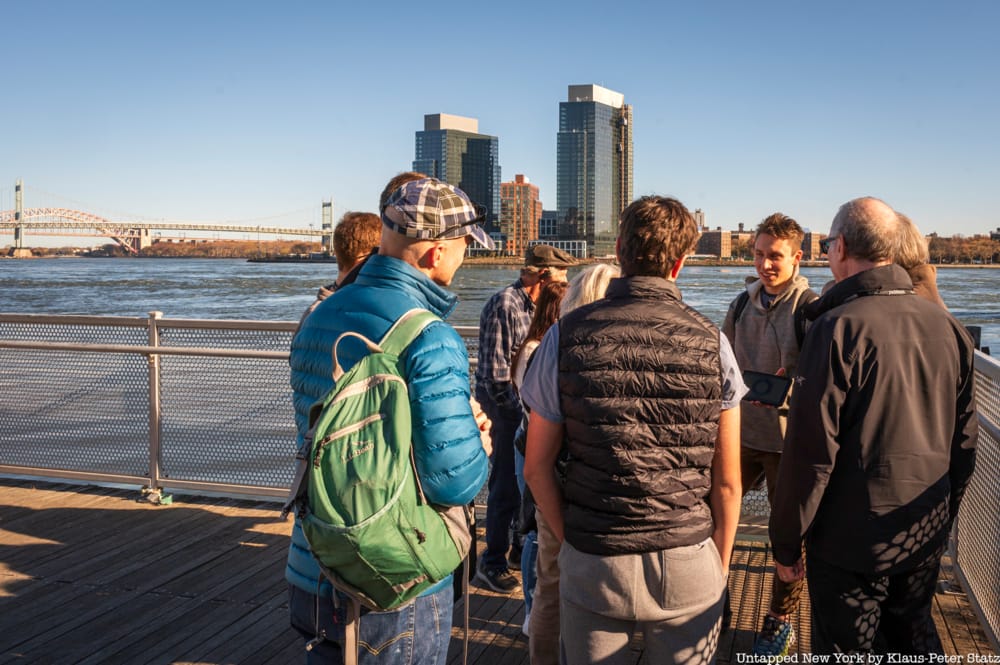
Sail past waterfront infrastructure, historic bridges, and abandoned islands as an energy professional explains how the city that never sleeps keeps running!
Next, check out more abandoned islands of NYC!
Originally published in 2015, updated by Nicole Saraniero in February 2025
Subscribe to our newsletter